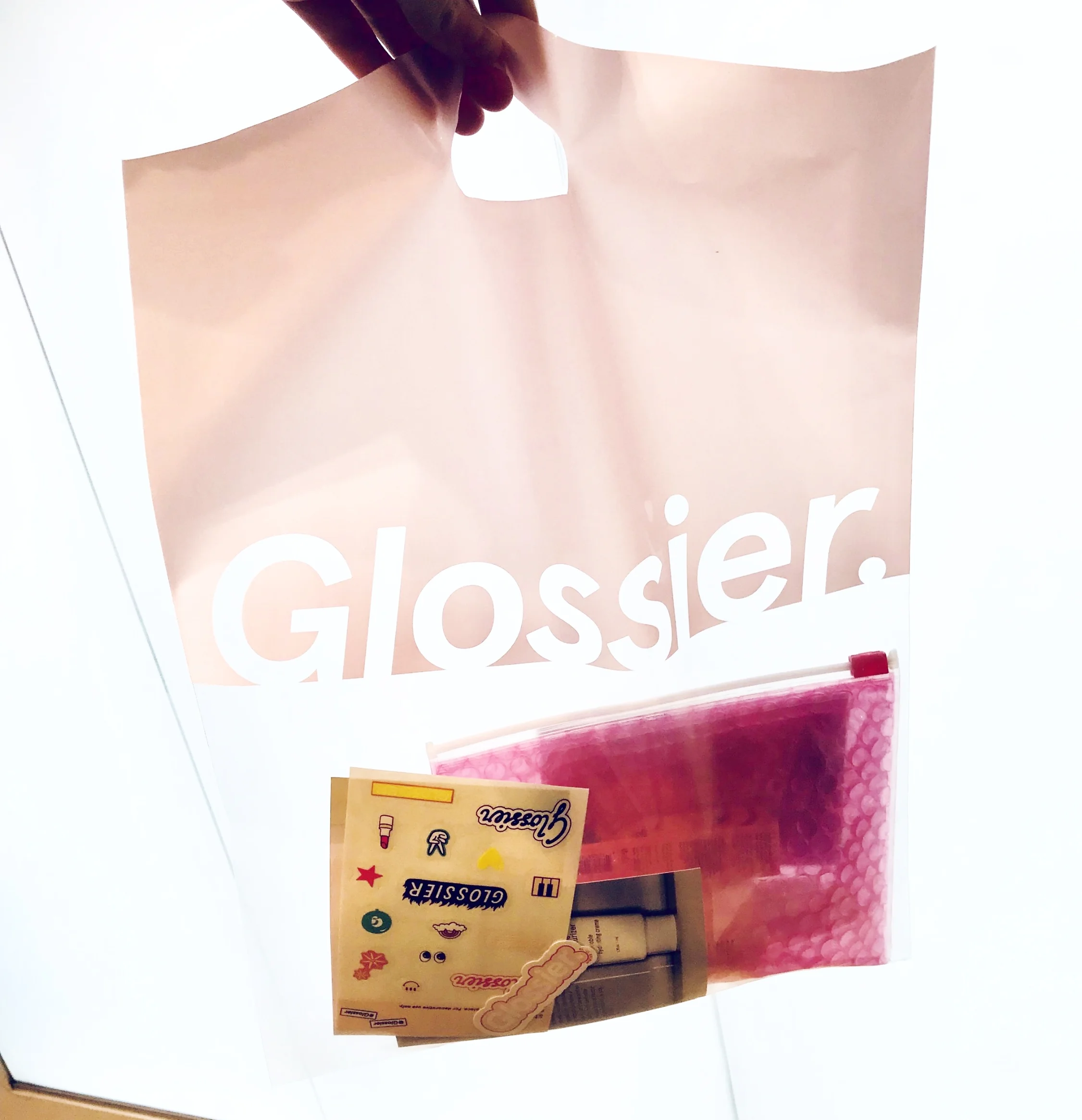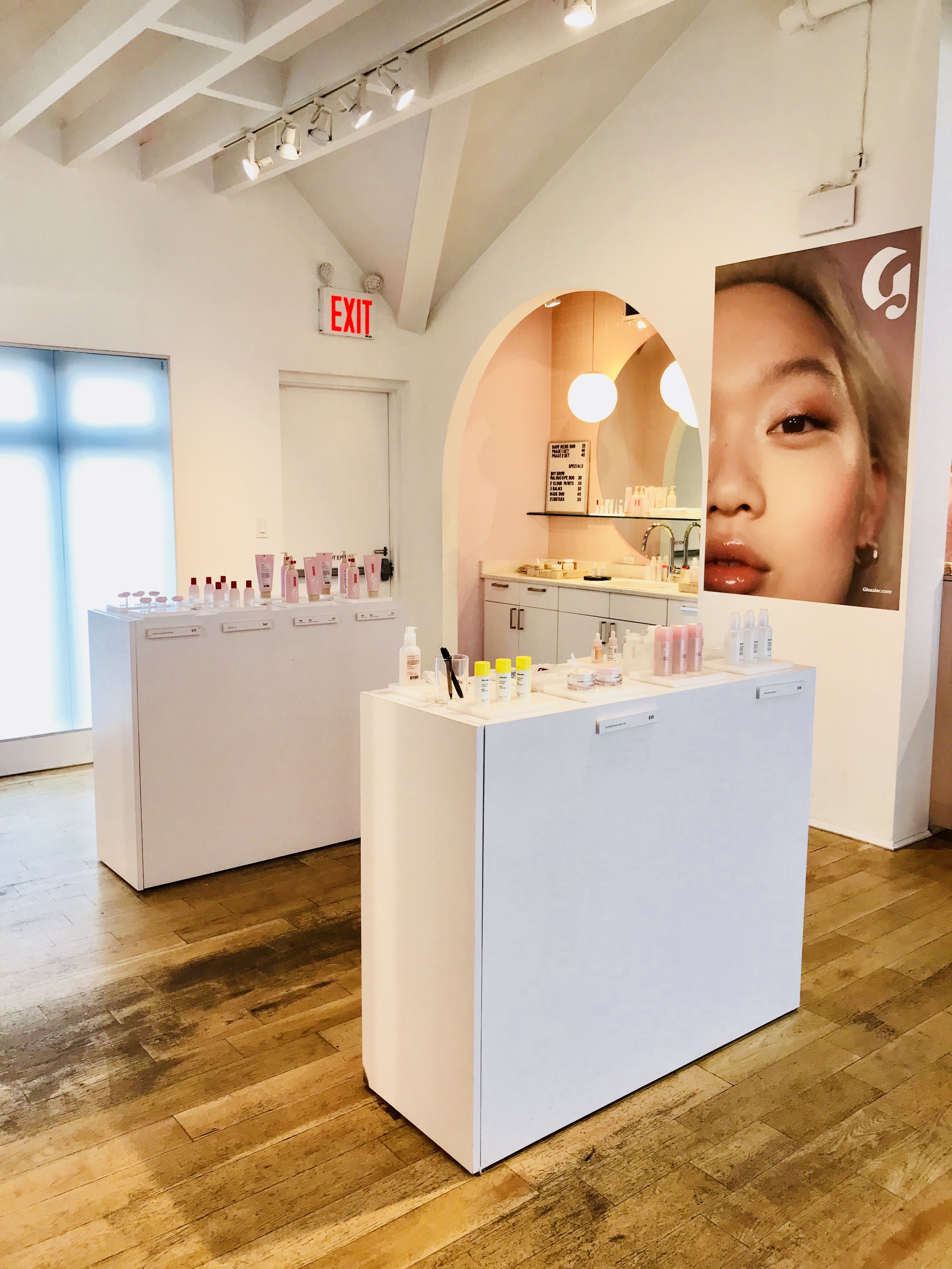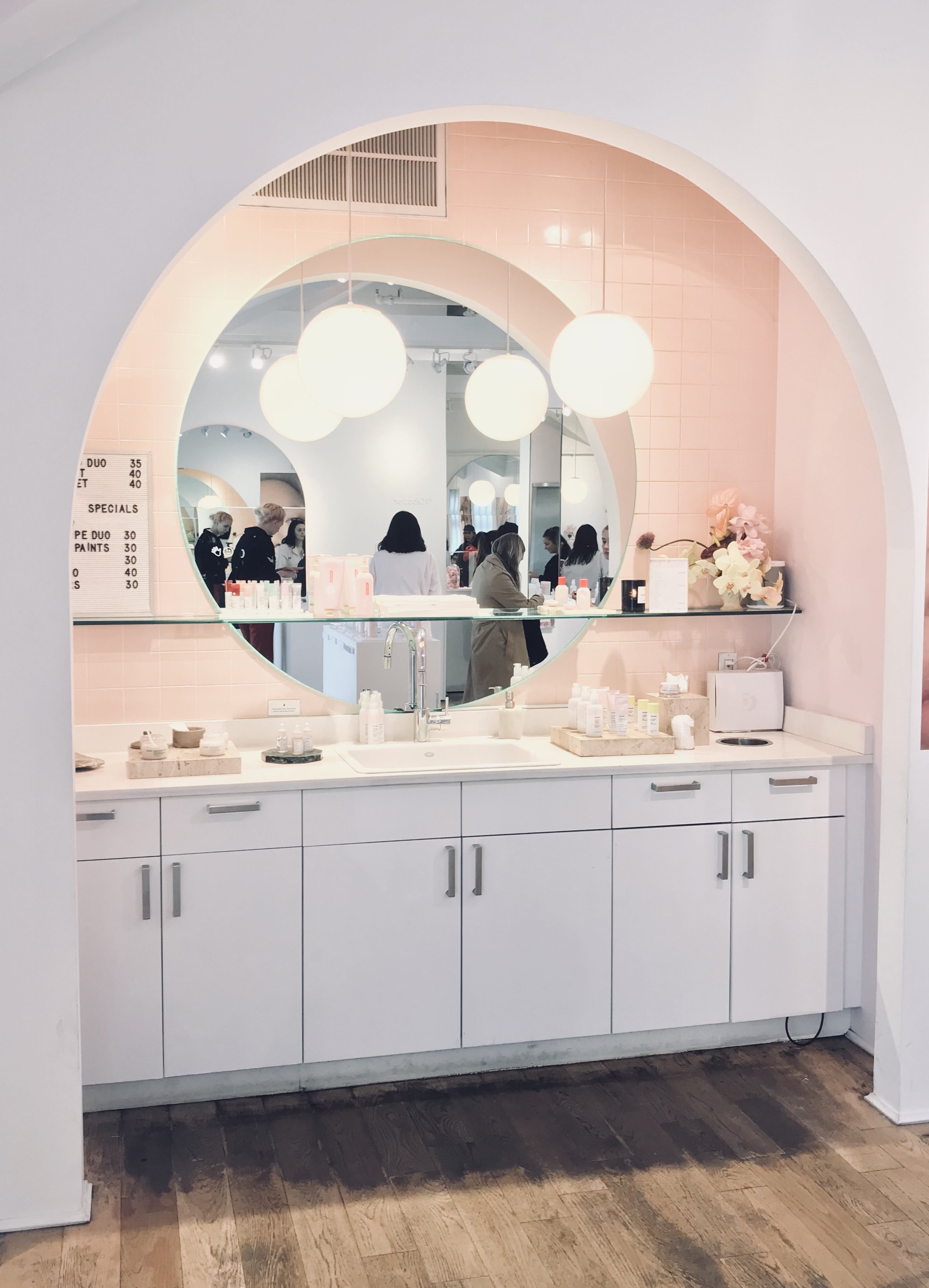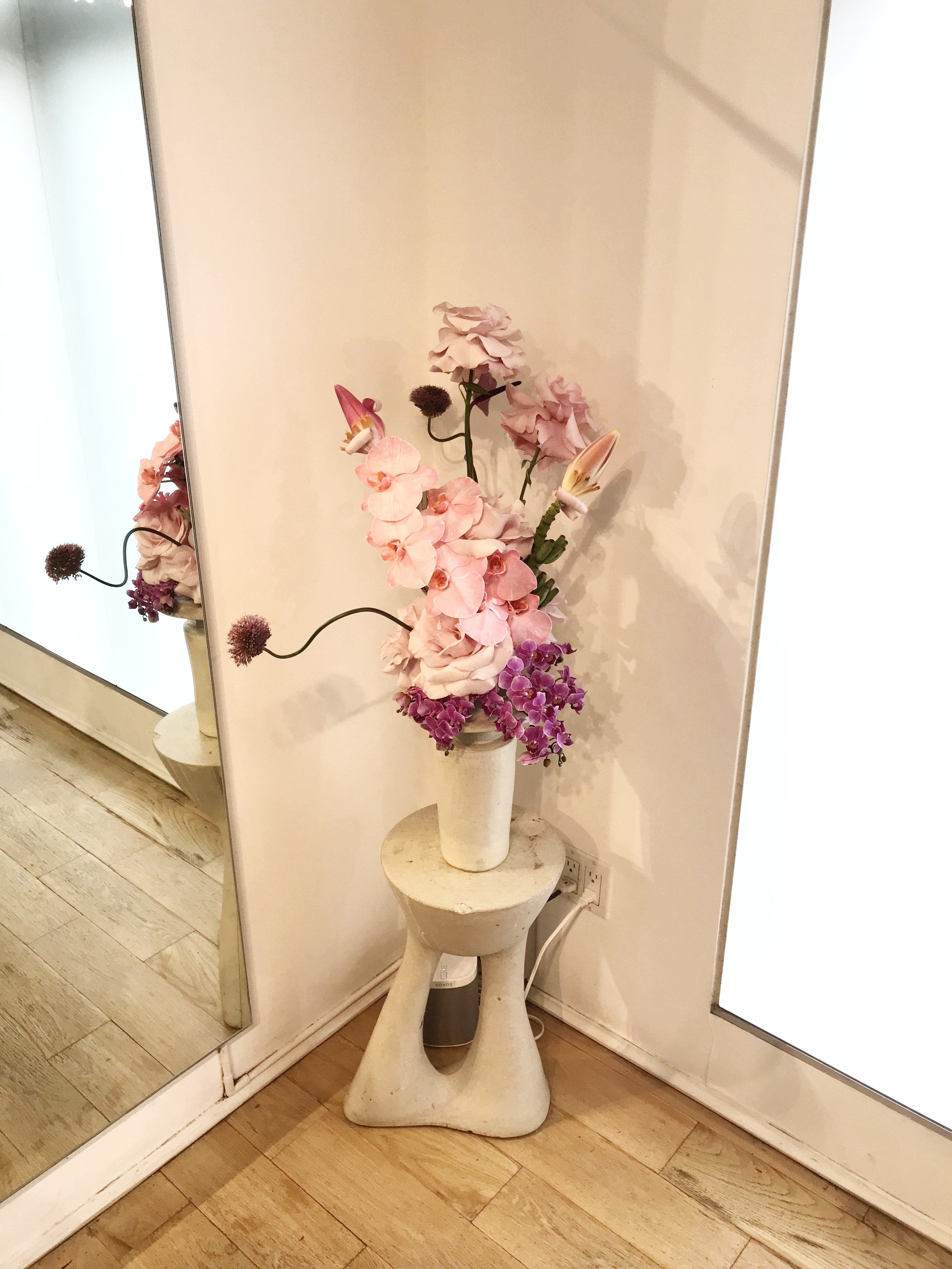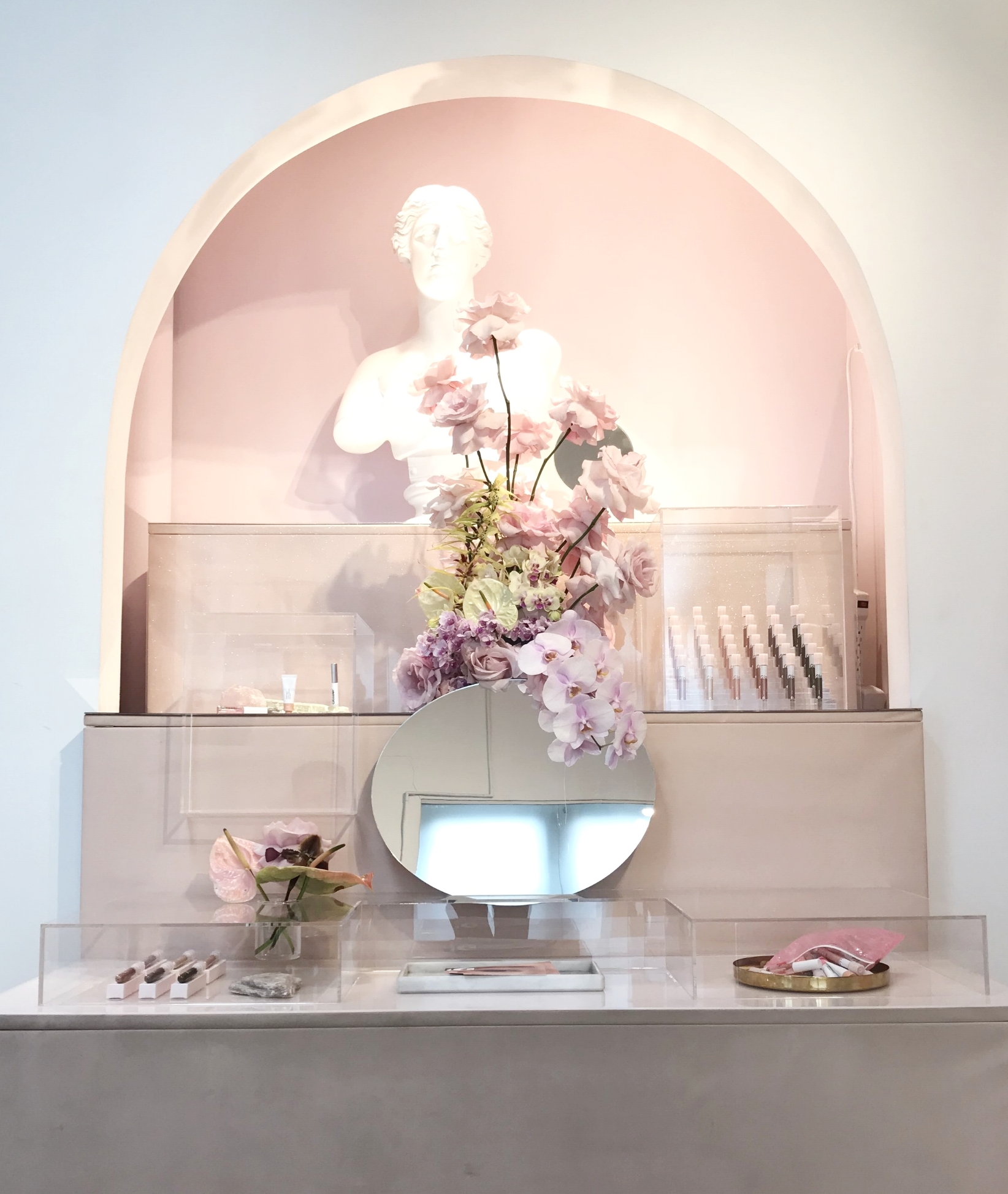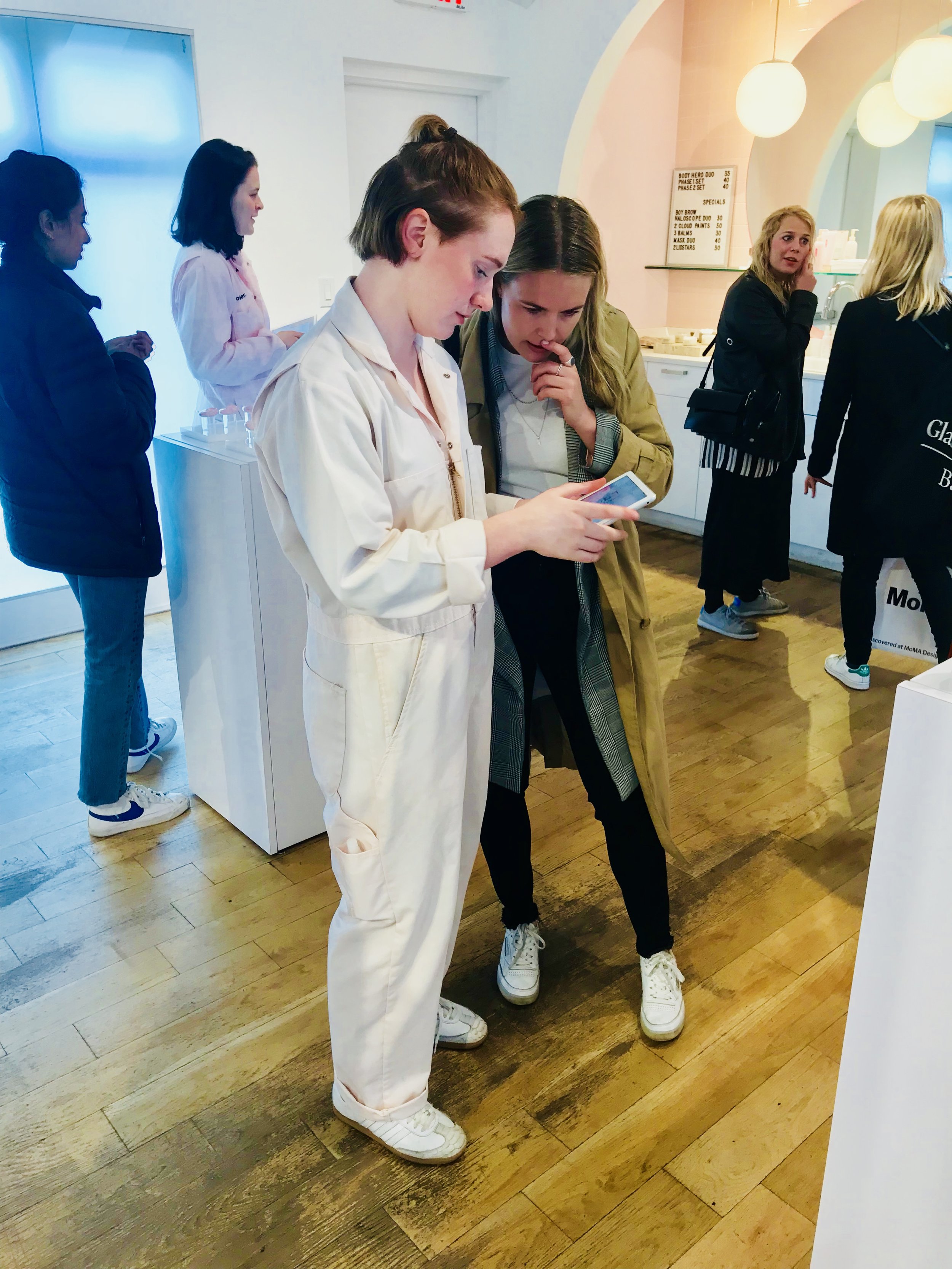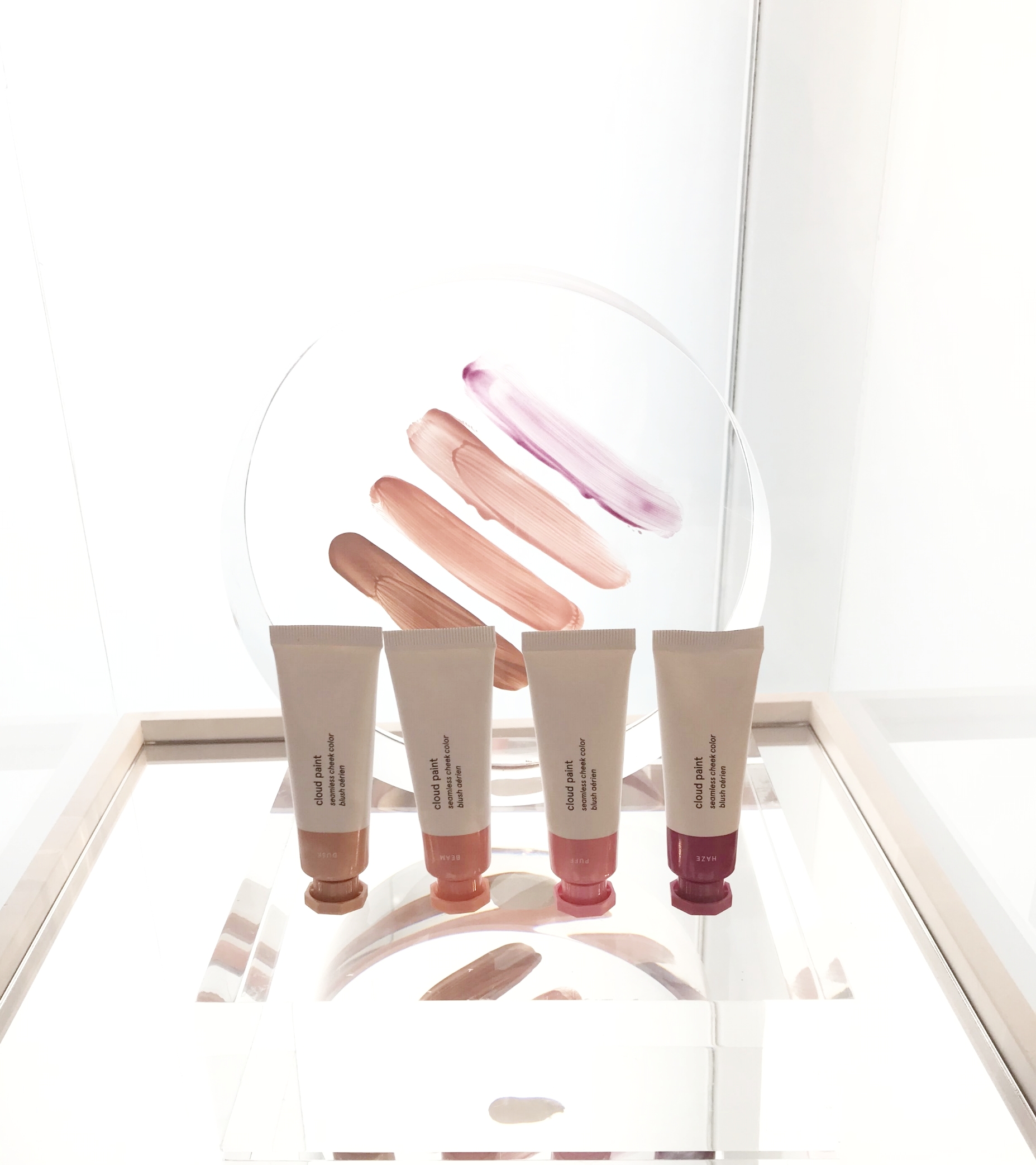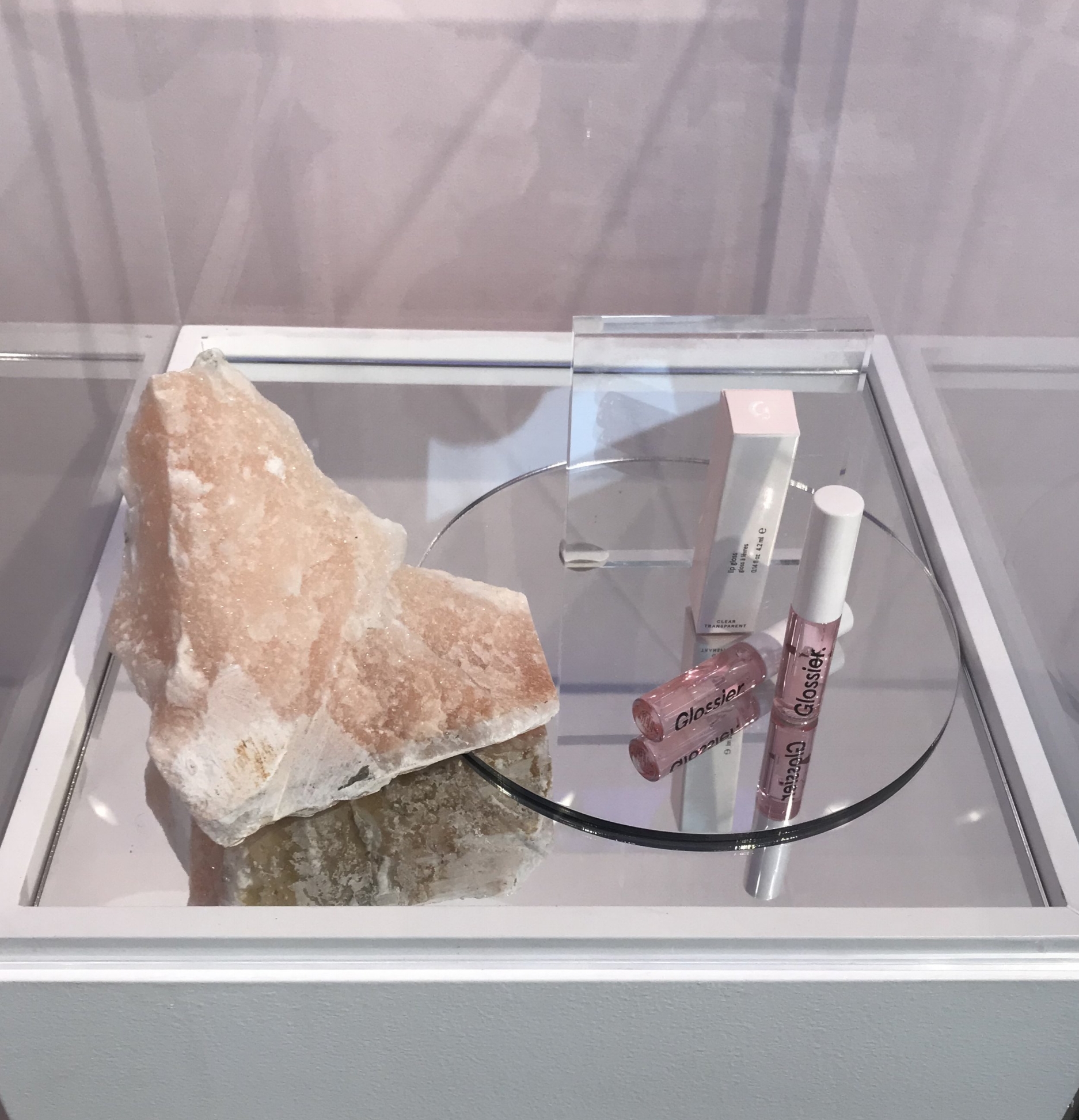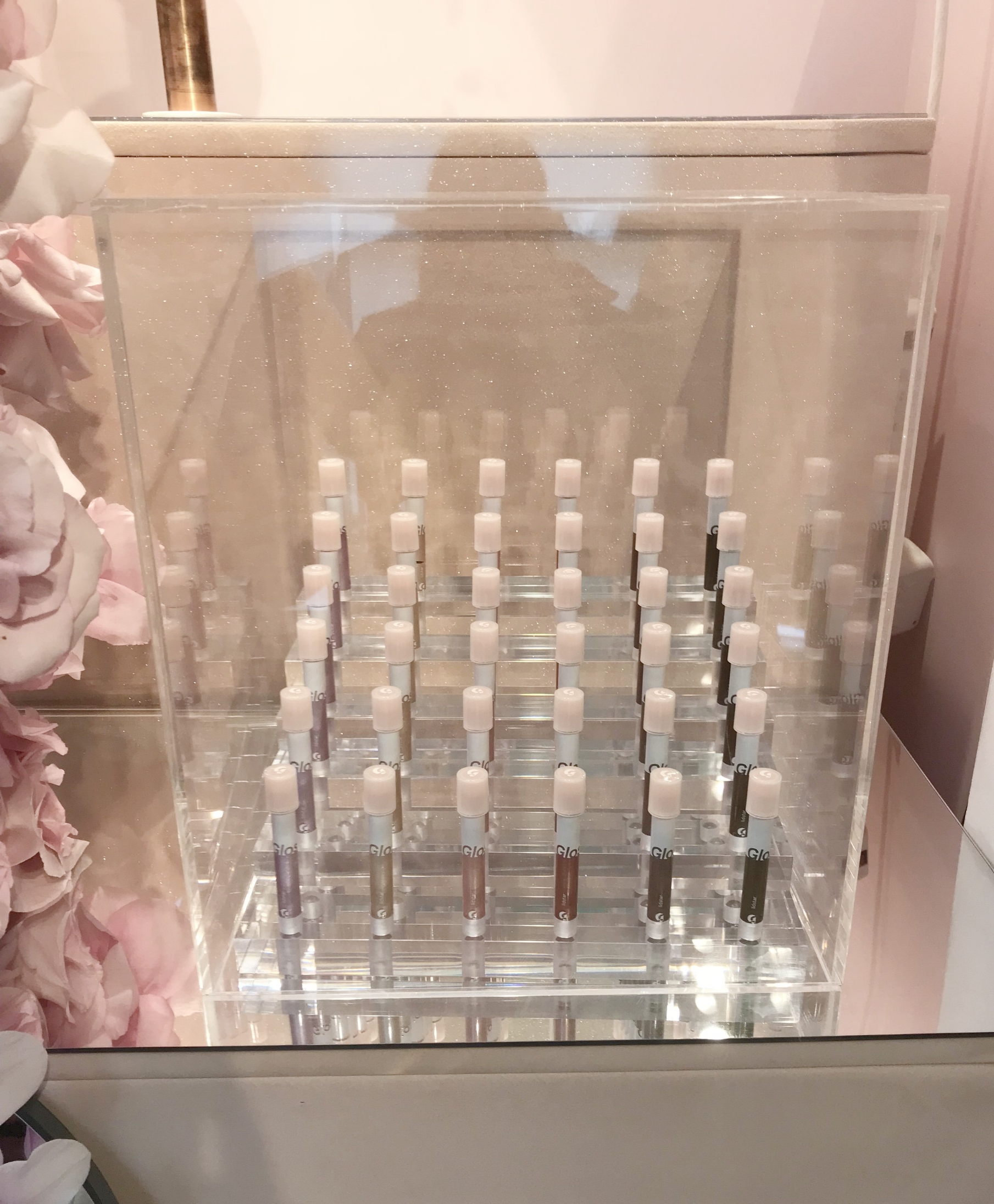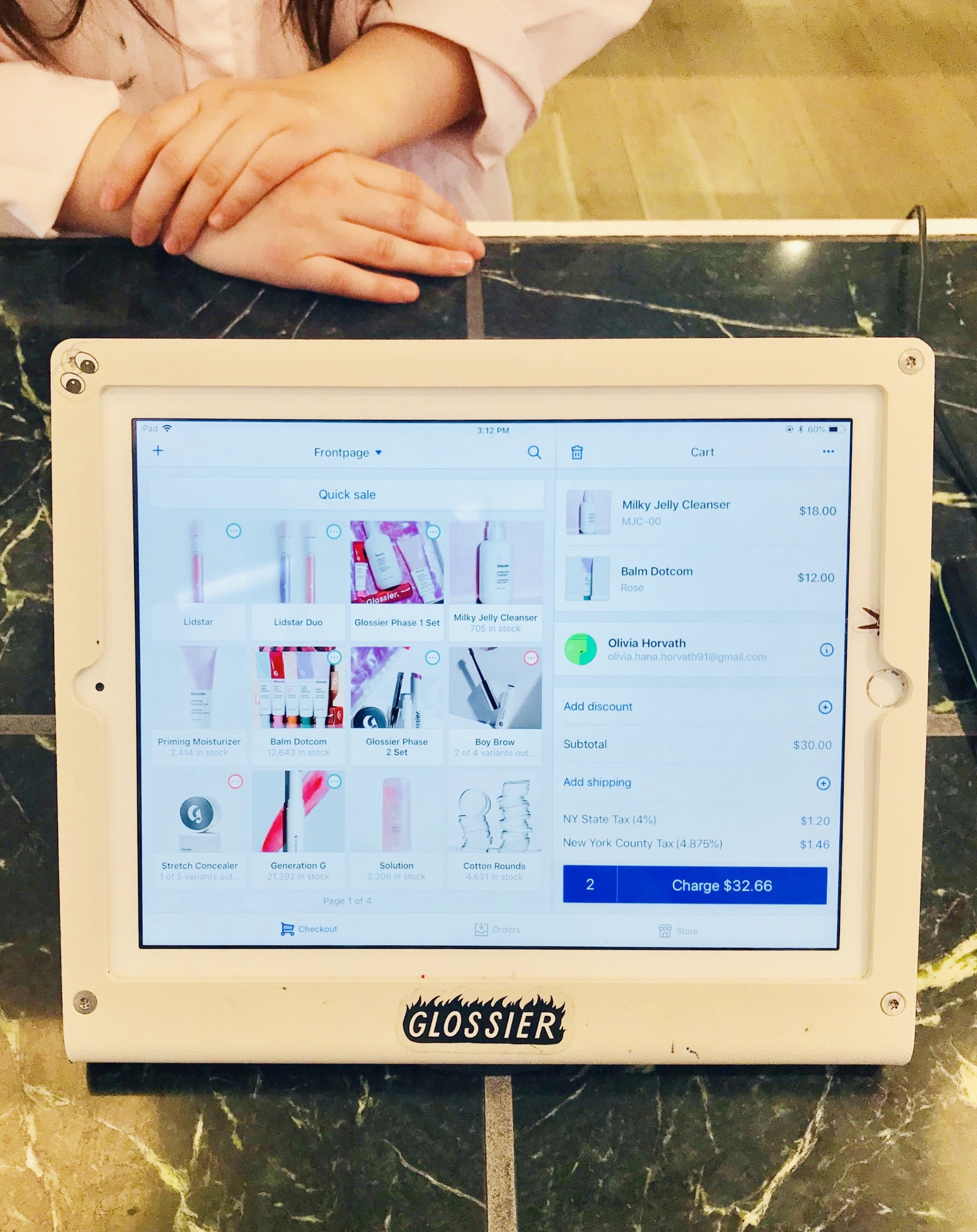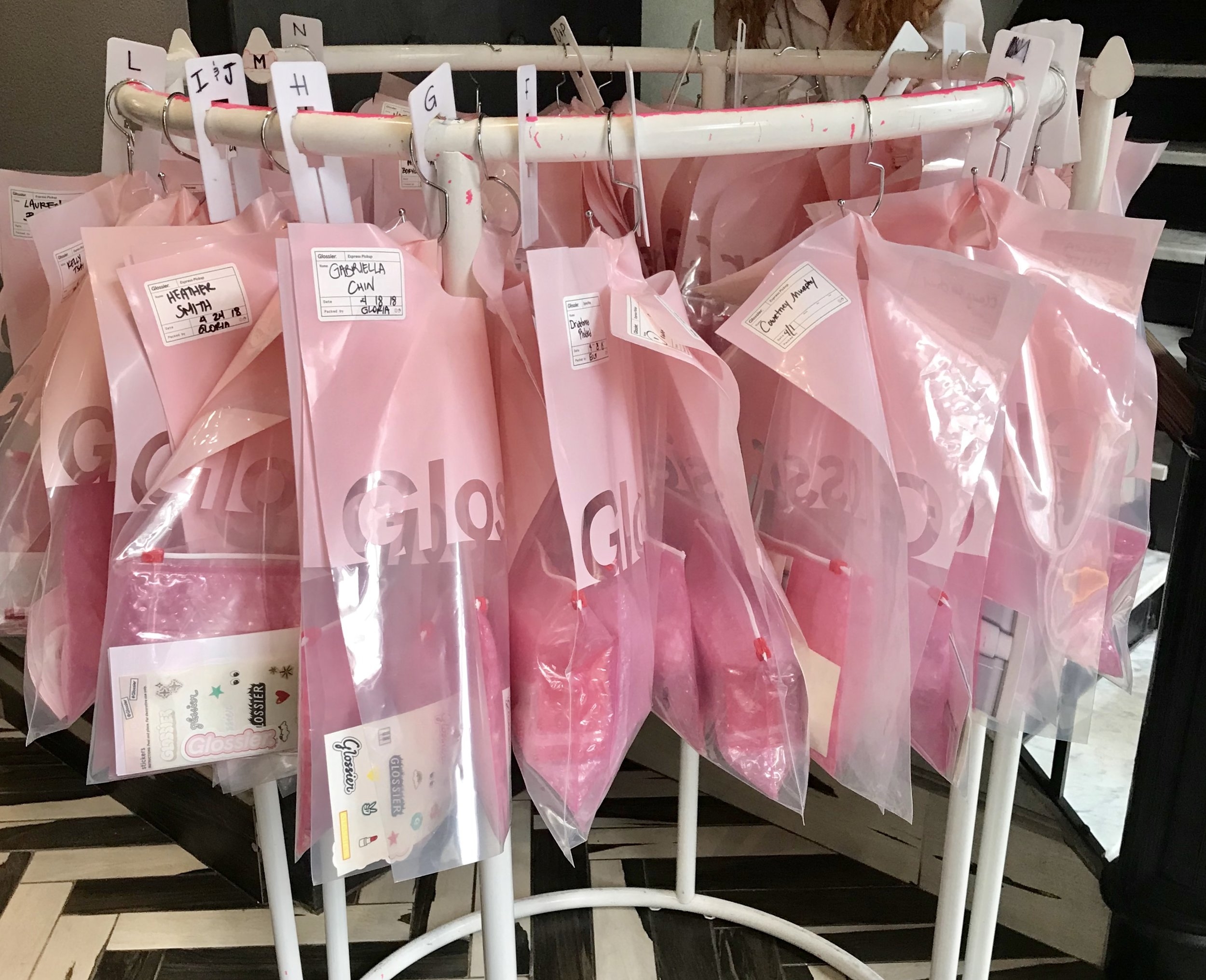Tech is changing everything, retail included. At Riley Group, we’re always studying retail technology and how it enables ecommerce brands to really make a splash in their brick-and-mortar locations. This week, retail guru Olivia Horvath will walk us through cult-like beauty startup Glossier’s tech-driven path to cosmetics queendom — and a breathtaking showroom in downtown Manhattan.
Step Into Glossier’s World: The Showroom
When you first enter Glossier’s showroom at 123 Lafayette Street, you’re greeted by a young woman dressed in a millennial-pink jumpsuit. The employee “showroom editor” guides you up an elevator to the brand’s penthouse showroom.
Already, the experience is unique. I know I’m going to encounter something special .
When the elevator doors open, I step into Glossier’s world. It feels like I’m inside the mind of a beauty-lover’s fantasy land — and I am. The space is bright and white with a minimalist design. There are accents of Glossier’s brand colors, millennial pink and bright red, throughout the store.
Entering Glossier is a multisensory experience. I smell fresh rose, thanks to scented Byredo candles. The music is familiar and makes me feel comfortable and a part of.
Of course, this is all by design. Glossier’s business model is all about building a community around its products.
A Community Steeped in Self-Love and Shelfies
Glossier, a beauty brand launched in 2014, was started by Emily Weiss, who’s now the company’s Insta-famous CEO.
Weiss started the very successful beauty blog, Into the Gloss. Into the Gloss launched in 2010, showcasing the beauty routines “Top Shelf” of diverse, successful women.
The online blog series focuses on the beauty products and routines that make women of all shapes and sizes and skin colors feel beautiful. Requisite pics of well-stocked medicine cabinets are adorably called “shelfies”, a play on pop culture’s “selfie”.
Weiss crowdsourced knowledge from her blog and infused it into every aspect of the makeup and beauty brand we now know as Glossier. When the company first launched, it began with a totally-perfected, quite small line of products. For sale were a moisturizer, lip balm, a tinted moisturizer, a concealer, and beloved eyebrow gel “Boy Brow”.
By keeping the product list short, Glossier redefined essentials. The products became must-haves with the help of targeted social media advertising and a rapidly growing, cult-like following.
The line has expanded to include lip stains, eyeshadows, a perfume, night serums, and other products. Still, the collection is well-curated and quite small when compared to competitors’ offerings. And the price point is moderate. While not drug-store cheap, no one item breaks the bank.
The brand eagerly interacts with followers on Instagram and Twitter, and has built a community there. Some Glossier fans are famous (think Beyoncé), but many others are just like me. We are all give the same attention and clout.
Glossier has mastered — and perhaps even helped define — millennial aesthetics, both online and in-person. I really felt that come to life as I wandered the floor of their flagship showroom.
Makeup as Something Worth Showcasing
The Glossier products themselves are perfectly merchandised on top of acrylic and glass displays, surrounded by unobtrusive mirrors. You can view and test the products right on the showroom floor, but it doesn’t feel like a regular department store. It feels like you’re in an unpretentious, interactive art gallery. It’s fun, it’s special, and it’s tactile.
Display cases for the brand’s products are simple but stylized, and surrounded by BRRCH floral arrangements. Soft pink, white, and bright red flowers add a vibrant-but-feminine touch to the intentionally understated showroom.
Glossier, in its spirit of community and womanhood, often collaborates with other female designers when designing its space. BRRCH’s principal, Brittany Asch, has long worked with the brand, and the two companies have a mutually beneficial, publicized-on-Instagram relationship.
Sales Associates Rely on Tech, But Know Their Makeup
The showroom “editors”, clad in their pink jumpsuits, eagerly chat with customers about their beauty needs and wants. They’ll aide you in crafting your own haul of products via handheld tablets. I feel like I’m in a fancy pharmacy.
While tech moves the customer through the purchasing funnel, it does not dominate the conversation. It is used by the sales associates as an aid. I still feel the human touch to my in-store experience.
Upon Checkout, An Iconic Shopping Pouch
Once I am done exploring, shopping, chatting, and testing, I can check out using my online profile. All of the products I’ve added to my virtual cart are then pulled, prepared, and given to me in the signature pink, bubble-wrap style pouch.
This pouch is so much more than a shopping bag. It is a symbol that proves you’re part of Glossier’s network of confident, beautiful, diverse women. This little pouch has helped shape the Glossier community. Around since 2014, it is adored by consumers for its plethora of uses. Glossier lovers use the pouch as a toiletry bag, handy wallet, even a fashion-forward clutch.
Also provided upon checkout: Stickers! These cute, playful stickers are half-branded, half-just-plain-fun, and are more free marketing for Glossier. They’re always adorned on my phone phone case. I want to be a part of Glossier’s club, and the brand makes it easy, fun, and cute to join.
Glossier For All
While Glossier is intune with the millennial lifestyle, the brand is neither ageist nor close-minded about beauty ideals. The products are streamlined and classic, but still fun and modern. I use them, and so does my mother.
Anyone can. That’s the vibe the brand gives off.
Glossier has long-supported women of all different backgrounds, ages, and shapes. I really feel that when I shop, whether it’s online or in-store. Glossier promotes self-love and body positivity through carefully executed campaigns, but I also feel it in the showroom and in every last detail.
#Glossier isn’t just a hashtag, it’s a community — and a damn good business model.

